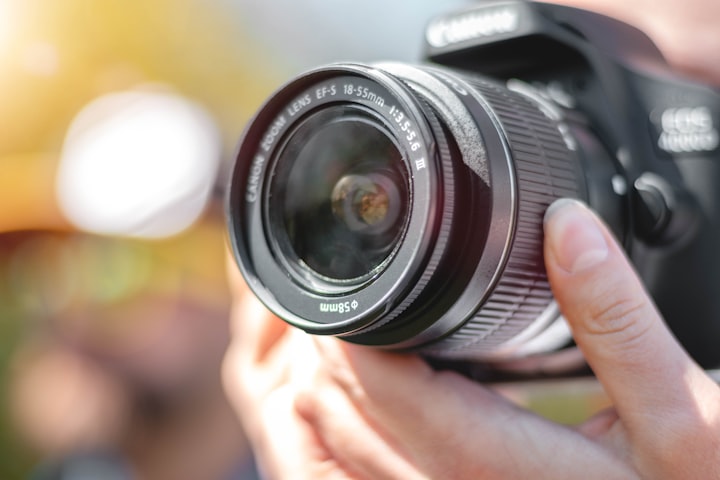
Photography is the art, application, and practice of creating images by recording light, either electronically by means of an image sensor, or chemically by means of a light-sensitive material such as photographic film. It is employed in many fields of science, manufacturing (e.g., photolithography), and business, as well as its more direct uses for art, film and video production, recreational purposes, hobby, and mass communication.
The word Photography literally means ‘drawing with light’, which derives from the Greek photo, meaning light and graph, meaning to draw. Photography is the process of recording an image – a photograph – on lightsensitive film or, in the case of digital photography, via a digital electronic or magnetic memory.
The photograph is evident in nearly every aspect of modern life. As a form of communication and documentation, photographs are present in newspapers, magazines, advertisements, posters, television, the Internet, passports, ID cards, archives, security and Surveillance Systems, forensics and medicine. Photography also plays an important role in domestic and recreational activities. Most photographs produced today take the form of Snapshots documenting activities such as holidays and celebrations. With the prevalence of digital cameras and mobile phone cameras, these activities are also documented for display on photo-sharing websites and photo-based Social Networking Sites. Despite the prevalence of photography in many aspects of modern life, only a small minority of photographs are considered to be art and tend to be displayed in museums and galleries in formats similar to painting.
The invention of photography is a contested subject. It was the outcome of many technological developments, most notably associated with the Industrial Revolution in the nineteenth century, but was also influenced by earlier technological developments such as the Camera obscura, which is an optical device used during the Renaissance to aid drawing and perspective.
Typically, a lens is used to focus the light reflected or emitted from objects into a real image on the light-sensitive surface inside a camera during a timed exposure. With an electronic image sensor, this produces an electrical charge at each pixel, which is electronically processed and stored in a digital image file for subsequent display or processing. The result with photographic emulsion is an invisible latent image, which is later chemically "developed" into a visible image, either negative or positive, depending on the purpose of the photographic material and the method of processing. A negative image on film is traditionally used to photographically create a positive image on a paper base, known as a print, either by using an enlarger or by contact printing.
Etymology
The word "photography" was created from the Greek roots φωτός (phōtós), genitive of φῶς (phōs), "light"[2] and γραφή (graphé) "representation by means of lines" or "drawing",[3] together meaning "drawing with light".[4]
Several people may have coined the same new term from these roots independently. Hércules Florence, a French painter and inventor living in Campinas, Brazil, used the French form of the word, photographie, in private notes which a Brazilian historian believes were written in 1834.[5] This claim is widely reported but is not yet largely recognized internationally. The first use of the word by Florence became widely known after the research of Boris Kossoy in 1980.[6]
The German newspaper Vossische Zeitung of 25 February 1839 contained an article entitled Photographie, discussing several priority claims – especially Henry Fox Talbot's – regarding Daguerre's claim of invention.[7] The article is the earliest known occurrence of the word in public print.[8] It was signed "J.M.", believed to have been Berlin astronomer Johann von Maedler.[9] The astronomer John Herschel is also credited with coining the word, independent of Talbot, in 1839.[10]
The inventors Nicéphore Niépce, Talbot, and Louis Daguerre seem not to have known or used the word "photography", but referred to their processes as "Heliography" (Niépce), "Photogenic Drawing"/"Talbotype"/"Calotype" (Talbot), and "Daguerreotype" (Daguerre).[9]
About the Creator
Olaoluwa
Ola was born 24th May 2011
He is a Story teller, Reasearcher, Poem Writer and lot more






Comments
There are no comments for this story
Be the first to respond and start the conversation.